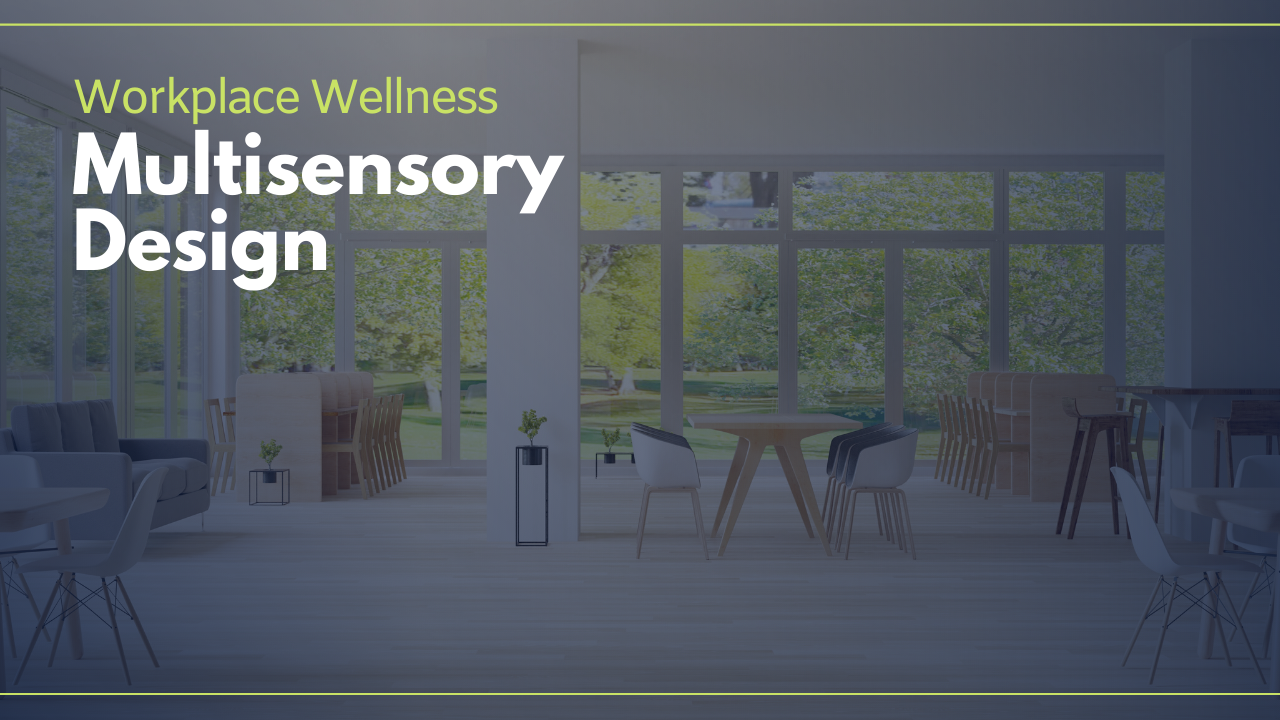- As people head back to the office, some are feeling heightened levels of stress and anxiety.
- By embracing a multisensory approach to workplace design, operators can help people feel more relaxed in their surroundings.
- Elements such as warm colors and aromatherapy oils taps our senses both consciously and unconsciously, creating a more welcoming workplace environment.
Around the world, organizations are gearing up to welcome employees back into the workplace.
While many guidelines and protocols are focusing on the safety of employees and reducing any potential exposure to the virus (i.e. temperature checks, increased sanitization, de-densification), it’s also important that leaders take some time to consider how returning to the office will impact workers’ mental health.
In a recent podcast Laura Shook Guzman, founder of Somavida and a trauma therapist, stated that while some people will happily return to the workplace, some people will be forever changed by the pandemic.
For the latter group, returning to the office can potentially be a source of stress and anxiety, which is why it’s important that organizations take steps to assuage those fears. Afterall, in order for people to be productive in the workplace, they need to feel comfortable and safe.
Measures like temperature checks, increased sanitization, limiting the amount of people that can be in the workplace at a given time, and providing individuals with access to disinfectant wipes and tissue are a great first step to calming fears and anxieties.
Suggested Reading: How to Safely Reopen Your Coworking Space: A Curated List of Steps
But beyond that, organizations should look to workplace design elements to help ensure that people feel comfortable and safe once they walk into the workplace.
“The spaces that you’re creating with intentional design can honestly calm and heal the nervous systems that are all going through a collective trauma. The global pandemic, regardless of how you feel about it, creates a collective traumatic response in the majority of people.”
Laura Shook Guzman
One way to do this is by embracing a multisensory approach to workplace design. This approach acknowledges that individuals react to their surroundings in many ways, consciously and unconsciously; these reactions are triggered by our senses and they can help us feel calm, or stressed.
Sight
What is the first thing that people see when they come into your workplace? Is it a piece of art that’s full of lively colors? Is it a painting of a landscape? Is it simple white walls? Is the space illuminated by artificial or natural light? What about the tone of the lights and color, are they on the warmer or colder spectrum?
Warm colors and natural light have been proven to help people feel welcome and comfortable. Moreover, having clearly defined lines or exits can also help reduce stress and anxiety levels when people are indoors.
The goal is for people to feel a sense of calm as soon as they walk in.
Smell
Our sense of smell is probably our strongest one. It can evoke happy and positive feelings; for instance, the smell of freshly baked cookies may create nostalgic memories of childhood and baking.
In the workplace, aromatherapy can be used to stimulate or create a sense of calm. Lavender for example has calming properties and can help control emotional stress, while lemon can aid concentration and reduce anxiousness. Vanilla has been found to lift the mood and reduce stress, while sandalwood can help ease feelings of anxiety.
Depending on your workspace layout, you can use specific scents throughout different areas. If you have a break room where people can go to relax, consider using lavender or sandalwood. If you have a brainstorming area where you want to encourage people to focus and be creative you can use jasmine, frankincense, or peppermint.
If you want to take it a step further, Shook Guzman mentioned in her recent podcast that thieves oil, which is a mix of several essential oils, “is good for reducing bacterial and viral things in the air.”
Sound
Have you ever noticed how the sound of water or rain instantly relaxes you? Have you noticed how people typing or talking stress you?
When it comes to sound in the workplace, more often than not it is associated with noise complaints and distractions — both of which can increase stress and anxiety levels.
As you welcome people back into the workplace, think of ways in which you can incorporate relaxing sounds into your built environment. You can install a water fountain, a pink or white noise system, or you can choose to play a curated list of music. The goal is to help mask some common office sounds that can trigger stress responses.
If you want to listen to Laura Shook Guzman’s podcast on wellness in coworking spaces, click here.


 Dr. Gleb Tsipursky – The Office Whisperer
Dr. Gleb Tsipursky – The Office Whisperer Nirit Cohen – WorkFutures
Nirit Cohen – WorkFutures Angela Howard – Culture Expert
Angela Howard – Culture Expert Drew Jones – Design & Innovation
Drew Jones – Design & Innovation Jonathan Price – CRE & Flex Expert
Jonathan Price – CRE & Flex Expert













